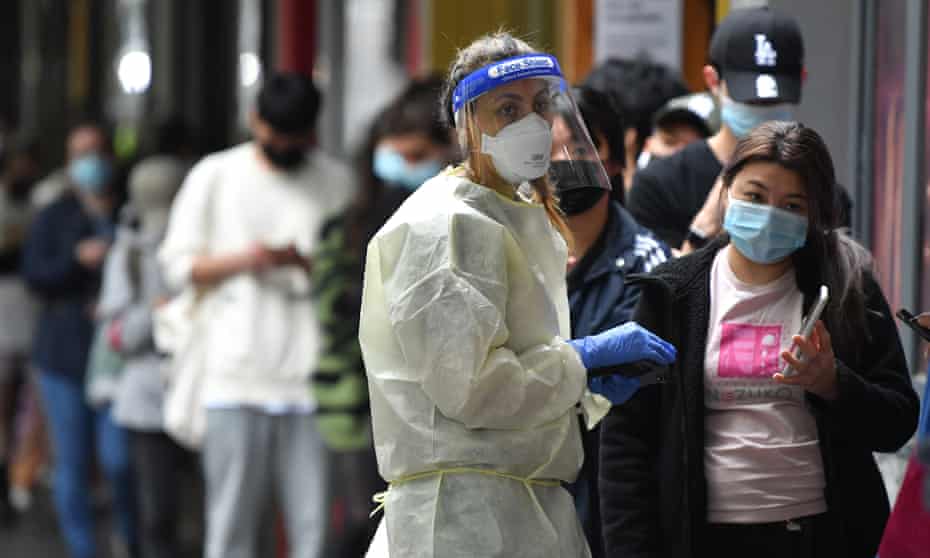Extract from The Guardian
Things are truly nuts – partly because of the pandemic and partly because we are having to deal with data that is out of date.

Things are truly nuts – partly because of the pandemic and partly because we are having to deal with data that is out of date because of the pandemic.
Take the latest retail trade figures that came out on Tuesday. They covered November last year – a time when life seemed to at least contain some degree of optimism.
It was a time before the Omicron wave, and before we had to put up with wall-to-wall coverage of Novac Djokovic’s spin on why he was out and about after testing positive to Covid, and before it was announced that Gal Gadot is going to star in a remake of To Catch a Thief.
Yes, things were a lot better in November.
We were back shopping and doing so at a truly insane level. But then nothing about how we have been spending money in the shops has been normal since the pandemic hit.
If you think you know what is going on in the economy since March 2020, I present the chart:
If the graph does not display please click here
Since March 2020, Australians have spent around $30bn more in the shops than would have been expected over that time.
The big winners are those selling household goods – ie furniture, electrical goods and hardware.
Total spending on such items since March 2020 is some $17bn above the pre-pandemic expectations and, in November alone, our spending on household goods was 32% above what you would have predicted in February 2020:
If the graph does not display please click here
Not everyone has been a winner, though.
Compare the “other” retailing, which includes pharmaceutical, and recreational goods with that spent on eating out. Prior to the pandemic we coincidentally spent the same amount on both categories – since then the paths have greatly diverged:
This matters not just because the graphs look so weird that I don’t even need to really tell you that things are wacky, but because when you see such massive weirdness, you need to realise it flows all the way through the economy – especially with jobs.
And so when the latest job vacancy figures came out on Wednesday showing nearly 400,000 vacancies in November last year – 170,000 more than in November 2019 – you could be forgiven for thinking the economy is absolutely booming:
If the graph does not display please click here
This massive surge in vacancies meant in November there were just 1.6 unemployed per vacancy throughout Australia – a record low:
Even if we include those underemployed, the picture remains seemingly good given the prior to the pandemic there were 8.3 underutilised persons per job vacancy and in November there were just 4.2:
If the graph does not display please click here
The issue is that the job market is totally unlike it was before the pandemic – for good and ill.
One way to show this is what is known as the “Beveridge curve”, which tracks the unemployment rate with the job vacancy rate (vacancies as a percentage of the labour force):
Since the pandemic the relationship between the two has shifted drastically away from the 40 years trend from 1980 through to 2019:
In the past, the number of job vacancies we had in November would have been associated with an unemployment rate of somewhere well below 2%. But in November the unemployment rate was 4.6%.
The reason is – as we are observing currently with groceries – one of demand and supply.
The job vacancy number is the demand for labour, but the labour force number is the amount of supply.
And since the pandemic, due to border restrictions our labour force has barely grown:
If the graph does not display please click here
There are around 365,000 fewer people in the labour force now than would have been expected before the pandemic.
Added to that is the inability for people to move easily within Australia to new jobs and you have a case of increased demand for jobs because of the end of lockdowns but a lack of supply because of less immigration and inter-state migration.
But we have not just had an increase in job vacancies because of a growth of work, but also because jobs previously held by migrants are now needed to be filled by someone else.
In effect we have two prongs of demand while supply is lacking.
And all of these figures come before the Omicron wave and the surge in cases and people being unable to work at the same time people are more hesitant to go out in public.
So how is the economy going?
In reality we don’t really know – nothing is as it usually is, nor as we can expect it to be in the future.
Unfortunately, there is enough confusing data around for politicians to tell you they know how strong it is. And voters who are not paying attention might very well believe them.
Greg Jericho writes on economics for Guardian Australia
No comments:
Post a Comment